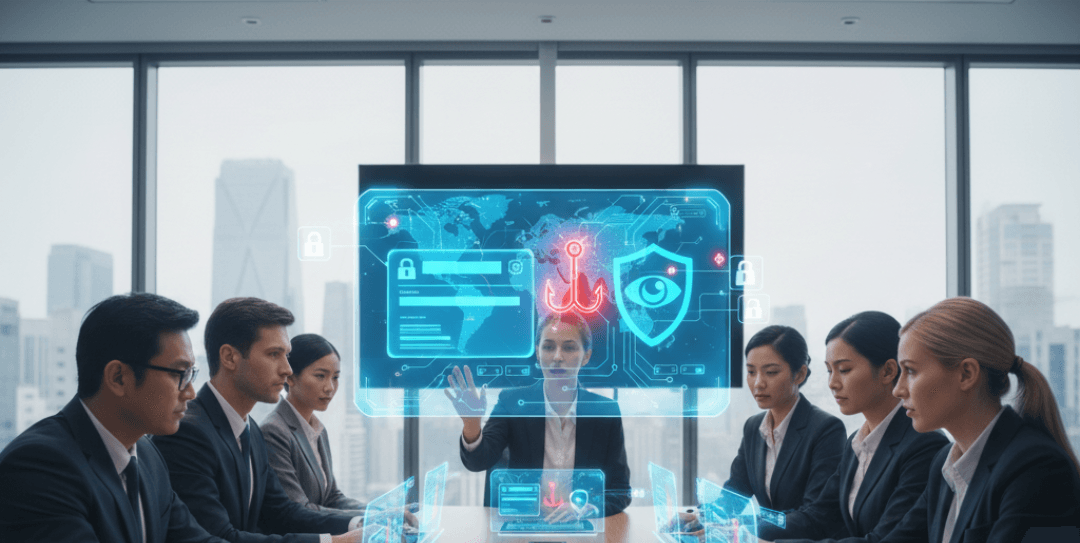Cybersecurity Training: How Employee Education Stops Phishing and Ransomware
For businesses, particularly SMEs, the single greatest cybersecurity risk isn’t a faulty firewall it’s human error. Crucially, no matter how much you invest in firewalls or antivirus software, a single employee clicking on a malicious link can lead to a complete system lockdown by ransomware.
A comprehensive Cybersecurity Training strategy transforms your employees from potential security gaps into your strongest line of defense. This guide breaks down why human risk is so high and how a simple, effective Cybersecurity Training program can save your business from catastrophe.
The Human Factor: Why Employees are the Weakest Link
Cyber attackers know that systems are hard to crack, but people are easy to trick. The most common threats rely on exploiting trust and urgency:
1. Phishing Attacks These attacks use deceitful emails or messages, often impersonating a bank, a manager, or a trusted vendor. Consequently, the goal is to trick an employee into revealing credentials or clicking a malicious file.
2. Ransomware Installation Once an employee clicks a malicious link from a phishing email, ransomware encrypts all accessible files, demanding payment. Furthermore, this quickly spreads across shared network drives, locking the entire business.
3. Social Engineering Attackers call or email staff directly, pretending to be from IT support or a service provider to extract sensitive information like passwords or server details.
Three Pillars of Effective Cybersecurity Training
A successful security awareness program must be continuous, engaging, and practical. Therefore, focus on these three core areas of Cybersecurity Training:
1. Recognizing Phishing and Email Threats
Employees need to learn to spot the red flags that automated systems miss. Training should cover:
- Sender Verification: Always check the full sender email address, not just the display name.
- Suspicious Links: Hover over links before clicking to see the true destination URL.
- Urgency & Emotion: Be skeptical of emails demanding immediate action, especially regarding finance or passwords.
- Attachment Scrutiny: Never open unexpected files, particularly those ending in
.zip,.exe, or double extensions (e.g.,invoice.pdf.exe).
2. Password and Access Hygiene
The foundation of technical security is user access control. In addition, employees must understand their responsibilities regarding credentials.
- Multi-Factor Authentication (MFA): Enforce MFA on all critical accounts (email, cloud, finance). Crucially, training must include why MFA is required and how to use it effectively.
- Unique Passwords: Stress the need for unique, complex passwords for every system.
- Principle of Least Privilege (PoLP): Employees should only have the necessary access required for their job. Ultimately, this limits the damage a compromised account can cause.
3. Incident Reporting and Response
When an employee suspects a breach or clicks a suspicious link, the time it takes to report the incident is critical. Hence, a clear reporting protocol is vital.
- Know the Protocol: Staff must know exactly who to call (internal IT or your support partner) and what information to provide immediately.
- Isolation: Train users to disconnect their device from the network if they suspect malware, consequently halting the spread of infection.
- Zero Shame: Foster a culture where reporting an error is seen as protecting the company, rather than an admission of guilt.
Engage staff with quizzes or IT-led simulations
Why Continuous Cybersecurity Training is Essential
The threat landscape is constantly evolving. Attackers rapidly change their tactics to bypass defenses. Therefore, annual training sessions are no longer sufficient.
- Changing Regulations: As data protection laws evolve globally, employees need updated knowledge on handling sensitive client and business data.
- New Technologies: The adoption of cloud services and remote tools creates new access points that staff must be trained to secure.
Don’t wait until a phishing email results in a devastating ransomware attack. Instead, invest in a proactive Cybersecurity Training program that safeguards your people and your data.


